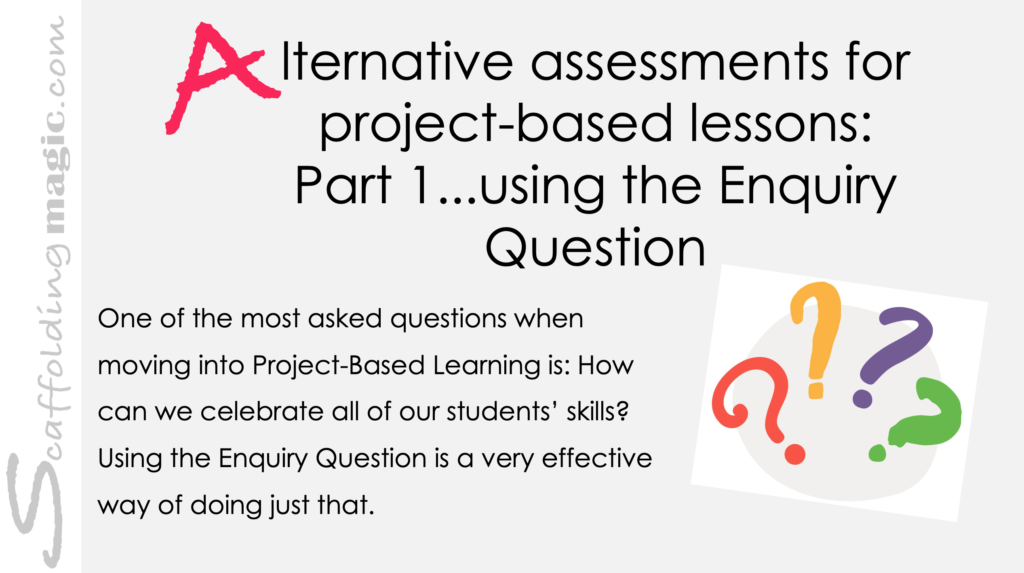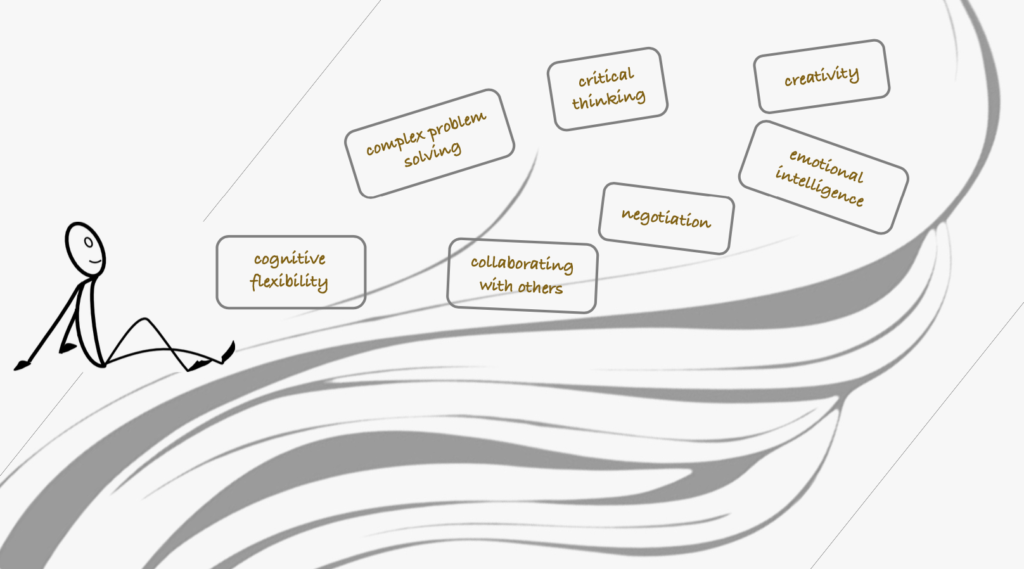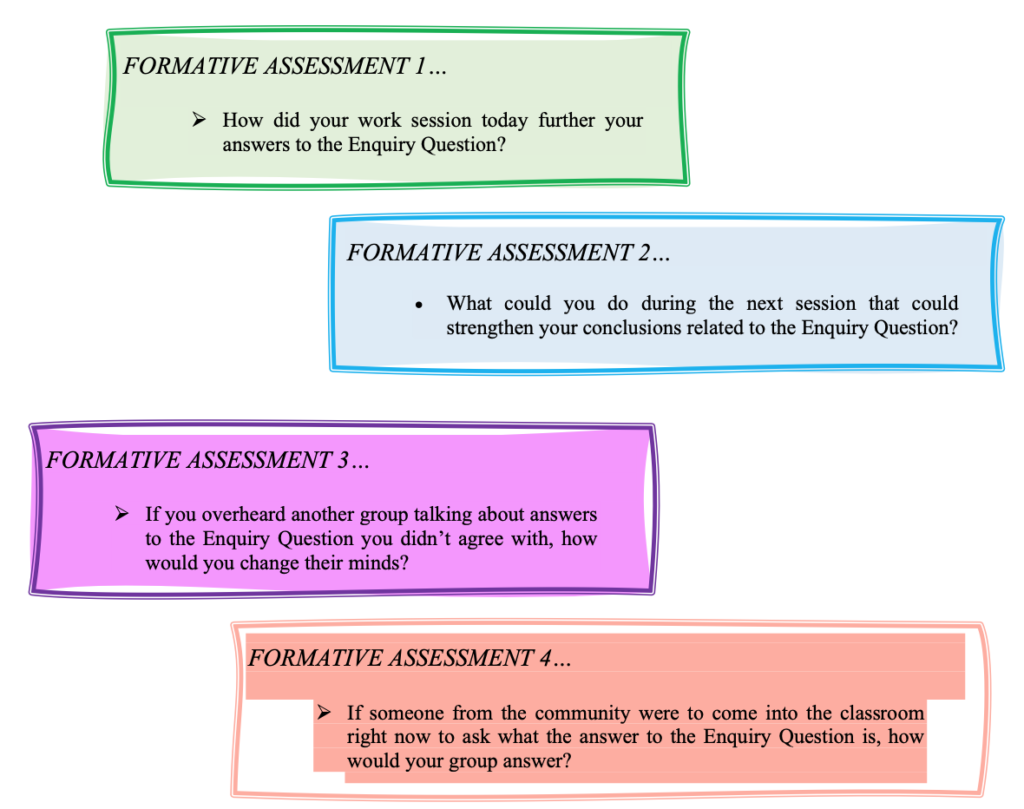
Download PDF of blog here.
How do traditional assessments harm our students?
‘Do I give my students traditional assessments for project-based lesson?’
‘And if not…how in the world do I assess them?’
These are familiar questions, right? Don’t worry – you’re not alone, and we have concrete options for you – ways to assess your project-based lessons and the different strengths your students show by learning in more holistic ways. In this first part, we’ll show you how you can assess your students with the very point of entry of projects: the Enquiry Question. Ready? This is going to be fun!
Because of tradition, and administrative pressures, you probably measure your students’ progress through their scores on worksheets, quizzes and exams which are all weighted heavily – if not exclusively – on linguistics. But who do these assessments satisfy? Well, because they are most familiar to directors, teachers, and parents, they are also the most accepted. But you’re different, aren’t you! You’re here seeking more information and more options. You have probably already realised that traditional methods usually don’t honour all of your students’ skills and achievements, especially when learning through projects.
The truth is, whether we realise it or not, from pre-school onwards, only those students who have strong linguistic and logistic skills, are validated by these traditionally linguistic/logical quizzes and exams. Those students who have different strengths – physical, creative, artistic, musical, collaborative, communicative, etc. – learn early on that their skills are not recognised as valid, and so spend most of their educational years simmering with resentment and frustration towards the assessment process in general.
This invisibility – or lack of recognition of the value of students with strengths other than what is measured in traditional assessments – is frequently the reason many students reject educational options and leave school at their earliest opportunity. In other words, this is the hidden driver behind a high percentage of drop-out rates.
We can stop this trend by letting our students learn through projects – giving them a platform to display and develop their broader pallet of learning styles and strengths – and then assessing them on all the skills that these projects promote.
To give exams, or not to give exams
In workshops all over the world, teachers ask me the same question: ‘Do we need to give exams at the end of projects even when we’ve given our students the opportunity to develop so many other skills during that class time? They know that traditional exams are not going to assess most of the holistic skills that projects promote.
My answer to them is always the same: until everyone is more informed about the validity of alternative assessments, we need to play the game and appease the expectations of our administrators and parents. What do I mean by this? Well, if the stakeholders in your school can only see the validity of a student’s progress through concrete exam scores, then it’s probably best to continue showing them these numbers, letters, and/or percentages – at least in the beginning.
However, we can also be proactive in helping them to see the validity of alternative assessments. We can take the time to patiently inform and educate these stakeholders – first about the substantiality and importance of projects, and then the validity of assessing them through alternative means. In this way, little by little, we give them room to become more comfortable with changes. (In Alternative Assessments for Project-Based Learning Part 2, you’ll find the 21st century skills that projects, and alternative assessments promote that the United Nations and the OECD find imperative for our students.)
In the end, administrators, parents, other teachers, the community, will see the reality: that a) exams simply do not show the entire developmental picture of students, and b) students’ assimilation of knowledge demonstrated through skills other than linguistic/logical are of equal importance.
Using the entry point of a project – the Enquiry Question – assessment
If you are working on projects, you’re probably already familiar with creating rubrics that, hopefully, begin with an Enquiry Question. Enquiry questions (also knowns as ‘key questions’ or the ‘driving question’) is a way of encapsulating the most important element of the project, and the easiest way of getting students excited and curious about it from the very beginning.
The Enquiry Question begins the project and is also perfect as a tool to assess continuing knowledge of your students’ work. To understand this more clearly, let’s take the enquiry question from a project that can be applied to a wide variety of subjects: language, social sciences, philosophy, history, economics, and more…Anti-Racism.

Great, you’re thinking. But how in the world do we use this as a formative assessment tool? Simple. Are you ready? You’re going to be amazed at how straightforward and effective it is:
But there’s more. Just as there are a variety of questions you can ask related to the ENQUIRY QUESTION, there are a variety of ways for your students to respond to your questions. The temptation is to ask questions verbally: we pose a question and then call on the students who raise their hands. However, those are the students who always raise their hands, while the other students are the ones who always keep their hands tightly by their sides, and so, this dynamic limits the feedback and therefore the whole objective of the asking the question.
A more viable way of getting this critical information from all of our students, is to;
- write their answers on small pieces of paper and they give them to us;
- send them to us in a message or on the class platform;
- stick a post-it note on the wall next to the door of the classroom as they exit;
- leave a crumpled piece of paper in a jar on your desk, collected by the Equipment Managers of each group;
- share a verbal conclusion from each group’s Speaker after having given them two (2) minutes to discuss the question and share thoughts;
- mime answers and other groups try to decipher what they are saying with their bodies;
- pick a song that encapsulates the feeling of the answer, and the other groups verbally interpret what their message is;
- …and so many more
Once we get the answers to our question, out analysis begins. Based on the level of understanding of their answers, we make decisions about whether we can move forward or whether we need to present key information in different ways so the groups can advance more effectively in their work. In other words, if the majority of the students are able to successfully respond and elaborate on your question, you’ll know that they understand the basic focus of that point. On the other hand, if we see doubts and holes in their interpretation of the question, we’ll know that they need to find ways of clarifying the targeted concepts in some other way.
So this is a very simple way of using the Enquiry Question to get a reliable idea of how our students are assimilating information. We’ll share even more ideas for alternative formative assessments in Part II of the next blog. See you then and HAVE FUN!!!

Scaffoldingmagic.com is your entryway into DYNAMIC bilingual learning methodologies, such as Phenomenon-Based Learning, CLIL, EMI, and ESL. You’ll find ways to implement critical thinking tools (DOK) to promote higher level thinking, the growth mindset, instill an ethic of excellence, deep reflection on learning, and all through multi-cultural, interdisciplinary activities. We have the keys to turning competences into action and to creating collective efficacy in your school so you move ahead as a unified, enthusiastic team.

Pingback: Alternative Assessments for Project-Based Lessons Part 3 of 3: Using Content and Language Objectives - Scaffolding Magic
Pingback: Alternative Assessments for Project-Based Lessons Part 2 of 3: Using the Final Task - Scaffolding Magic